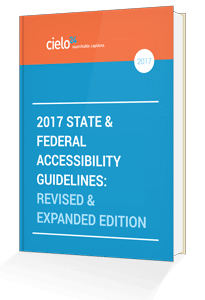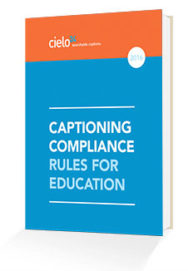Industry: Kaltura Users, K-12, Elementary and Secondary School, Higher Education, University, MOOCs, Flipped Classroom, EdTech, Distance…

Beyond Accessibility: Video Captions Improve Learning Outcomes
Video Captions Improve Student Performance
Video captions are an essential part of providing accessible education to students with hearing disabilities. On top of this, captions improve the learning outcomes for all students and make content more easily understandable to students who do not speak English as their first language.
Reading Comprehension
In 2009, researchers Greg McCall and Carmen Craig conducted a randomized controlled trial to examine the impacts of Same-Language-Subtitling (SLS), another word for captioning, on the reading comprehension skills of secondary school students in Kaneohe, Hawaii.
McCall and Craig randomly assigned 198 secondary school students with learning disabilities (ages 14 to 19) to either special education classrooms using the SLS intervention or comparison classrooms (special or general education). The study found that students in the SLS intervention condition scored significantly higher than students in the comparison condition on the reading comprehension achievement post-tests.

Another study conducted by Planet Read in India showed same-language-subtitling on TV to greatly increase the literacy rate of children in the country, doubling the number of functional early-age readers.
Furthermore, video captions improve comprehension for non-native English speakers. With 61.8 million people in the U.S. who have a native language other than English, video captions are a great resource to help these individuals follow along better in class, just like captions are a vital resource for those learning a new language.
Lastly, captions improve comprehension of educational videos because they clarify the dialogue when the speaker has a dialect, technical terms are used, the audio is muffled or too quiet, or when the environment is noisy.
Improved GPA
Captions in educational videos, meant for students with learning disabilities, can increase test scores for all students. Robert Keith Collins, a professor of American Indian studies at San Francisco State University, found students’ performances on tests improved dramatically when captions were turned on during videos.
During the first year of a 2-year case study, Collins showed videos without captions to establish a baseline of student comprehension, then in the second year, he turned on the captions and began to see improvement in comprehension and grades.
His students went from receiving C’s, D’s and F’s in the non-captioned year, to A’s, B’s and C’s in the captioned year. Students noted that video captions helped them focus and take better notes. With a 1 GPA point increase for his students, Collins became a firm believer in the benefits of captioning.
The Library of Philosophy and Practice at the University of Nebraska-Lincoln also conducted a study examining the effects of using subtitles and captions. The study found that the performance of students who were exposed to the instructional strategy that used captions and subtitles improved significantly over the students who were not exposed to this strategy.
Captions Include a Larger Audience
While captioning is important for ensuring students with hearing disabilities can access and understand multimedia content, they are not the only students who may need extra assistance. Students with learning disabilities, preferred styles of learning, and students whose first language is not English all greatly benefit from captioning.
Learning disabilities affect thousands of students and when not accommodated, they can hinder students’ success in higher education. Below are some statistics published in 2014 by the National Center for Learning Disabilities.
- 67% of young adults with LD report enrollment in some type of postsecondary education within eight years of leaving high school, the same as the general population.
- Young adults with LD attend two-year or community college at more than double the rate of the general population.
- Young adults with LD attend four-year colleges at half the rate of the general population.
- Only 17% of young adults with LD received accommodations and supports in postsecondary education because of their disability, compared to 94% in high school.
- The college completion rate for young adults with LD is 41 % compared to 52% in the general population.

Captions are one simple way to aide these students and provide missing information for learners who might have trouble processing auditory or speech components in media.
Additionally, there are 4.5 million public school students in the U.S. whose first language is not English, and captions are a powerful way to help non-native speakers fully understand key concepts, especially when dealing in technical subjects.
With something as simple as captions, educators can properly serve students with physical and learning disabilities, create a welcoming and helpful environment for non-native English speakers, and improve the learning outcomes for all students at the university.
Summary
First and foremost, captions prevent disability discrimination, but for educators they do much more than that. Captioning is an inclusive design component that improves student comprehension and retention, leading to improved literacy and test scores.
Closed captions are useful for aiding the understanding of videos that use technical terminology or have unclear audio. Students with learning disabilities and non-native English speakers, especially international students, benefit greatly from the visual reinforcement that captions provide in educational video.
By making your course content accessible and welcoming to those with disabilities, you are also improving the experience for all students.





